 What are green manures?
What are green manures?
Green manures are plants that are grown as organic fertilizer. First of all, they structure the soil: they loosen heavy clay soil, facilitating the access of moisture and air, and strengthen sandy soil, making it more cohesive.
The use of green manure crops makes it possible to reduce and sometimes completely eliminate the application of mineral and organic fertilizers to the soil.
Probably everyone already knows that green manure is grown to enrich the soil. Many even plant them on their plots.But not everyone can get the maximum benefit from using green manure.
Most often, grown green manure is plowed into the ground using a shovel or walk-behind tractor. And this undoubtedly brings great benefits. The soil is saturated with nitrogen, phosphorus, potassium and other microelements, without the application of mineral or organic fertilizers.
However, the purpose of green manure is much broader. It can not only enrich the soil, but also improve its structure. To do this, we will have to give up the shovel that is so familiar and so dear to our hearts. If you start planting green manure on your plot, then digging up the soil is no longer necessary. Plants called green manure will do this for you.
Thousands of small roots penetrating the soil will loosen it better than any walk-behind tractor. In addition, they rot very quickly and a huge number of small channels appear in the ground - capillaries, through which both water and air easily penetrate.
And this is precisely what structured soil is. The green mass of these plants is simply mowed and immediately used as mulch.
Of course, everything is not done quickly or easily. You should not think that green manure once planted will turn your land into fluff in one year. The earth requires constant care and attention from us.
In addition, the composition of the soil is of great importance. If the soil is clayey, you should first plant green manure with a strong root system, such as narrow-leaved lupine, oilseed radish or rye. In a year or two, you simply won’t recognize your soil; it will become soft and crumbly.
In the photo you see what kind of soil becomes mustard after greening. Before taking the photo, I didn’t dig or loosen it, it’s just the way the mustard roots made it. The soil simply falls off the shovel itself. Why dig it up again? In such soil you can immediately plant seedlings or sow something.
The best green manures
There are many green manure crops and they all fulfill their purpose - they improve the quality of the soil. It is quite difficult to describe the use of each of them in one article. Therefore, let's look at the most popular ones that gardeners
most often used for green manure.
Phacelia. Many summer residents consider phacelia one of the best green manures. It is cold-resistant, and therefore can be planted in early spring - as soon as the snow melts, and in autumn - shortly before the first frost. It grows quickly (weeds can’t keep up with it). It looks attractive even without flowers and is appropriate on any vacant piece of land.
This green manure is not demanding on soils: it will grow on both clay and sandy soils. The delicate leaves of phacelia, when embedded in the soil, quickly decompose, increasing its fertility and improving its structure. At the phacelia in the garden
no relatives, she is considered a good predecessor for everyone.
Mustard. This green manure crop is sown in gardens more often than others and it is rightfully considered, if not the best, then at least one of the best green manure crops. Mustard enriches the soil with organic matter and suppresses
development of weeds, pests, diseases, prevents soil erosion.
You can start planting mustard immediately after the snow melts, since its seeds germinate at temperatures just above zero.And to start growing quickly, mustard does not need a lot of heat. Before planting the seedlings, it manages to build up an impressive green mass.
Mustard has one drawback: it should not precede crops such as radish, cabbage, radishes, because they are all from the same cruciferous family.
Rye. Of all the green manures, rye is the most unpretentious to soils, it has a powerful root system, is drought-resistant,
It tolerates even snowless, harsh winters well.
But rye is also the most problematic green manure. She is difficult to work with. A flat cutter cuts it with great difficulty; in most cases, all that remains is to dig it up and embed it in the ground.
Despite the labor-intensive digging, rye is also one of the best green manures. Rapid growth and strong tillering of plants leaves no room even for weeds such as wheatgrass, woodlice, and sow thistle. Rye destroys pathogens of fungal diseases and inhibits nematodes. In a word, growing rye as a green manure crop significantly increases both soil fertility and its sanitary condition.
Planting green manure
How to sow green manure. Mustard and phacelia seeds are simply scattered evenly and raked into the
land. You need to sow thickly. The consumption rate for phacelia seeds is 200 g. per hundred square meters, mustard 500 gr.
Cereals are often sown in furrows. If you are planting in virgin soil, then dig up the soil; if after harvesting some cultivated plant, then level it with a rake and make shallow furrows every 10 - 15 cm. Before the shoots appear, make sure that the soil does not dry out, otherwise the shoots will not be friendly.
I also want to warn you that green manure seeds are loved by birds and... ants.I saw with my own eyes how the ants organized a living conveyor belt to move mustard seeds from our greenhouse to their anthill. Moreover, the scale of this robbery simply amazed me. I had to take action.
Planting green manure in spring.
Green manure crops such as phacelia and mustard begin to be sown very early. After all, they are not afraid of frost, and the seeds germinate even with a small plus. After germination, these green manures grow quietly until the time comes to plant seedlings of garden crops in this place. But in the future, three options for the development of green manure events are possible.
- You can dig everything up, put it in the ground and plant any crops in this place. As mentioned above, this
The option is the least effective, but quite workable and in some cases even the simplest.
- From now on we will need a flat cutter. The tool is very useful, multifunctional, and when growing green manure, you can’t do without it. The stems of green manure are cut with a flat cutter several cm below the soil level. After planting the seedlings, we mulch the same bed with the cut tops. They rot and become fertilizer.
- This option is shown in the photo. We make holes in the bed with green manure and plant seedlings there. There it will grow for another 2-3 weeks along with our “green fertilizer”. Subsequently, the stems of green manure are cut with scissors and pruning shears at a height of approximately 5 cm from the ground. The cut greens are arranged here in the beds. After some time, it grows back again, it is cut off again, and so on. This method will seem complicated to many, but I know people who grow everything this way.
You just need to keep in mind that not all green manure crops are able to grow back after cutting. For example, mustard grows, but phacelia does not.
Growing green manure in summer
If you are not going to plant cultivated plants on your plot (or part of the plot) throughout the summer, then it makes sense to start improving and enriching the soil at this time. You can plant green manure in the spring and throughout
During the summer, mow them periodically.
Plants must be mowed before flowering, or better yet, before budding. Until this time, the stems contain the maximum amount of useful substances. Then everything goes into flowers and seeds, and the young shoots rot much faster than the old ones.
If you planted green manure that does not grow back after mowing, you will have to sow new seeds each time. At the same time, they need to be embedded deeper into the ground than in spring and watered more often. Thus, in one season you can radically improve the condition of the soil in your summer cottage.
Planting green manure in autumn
In the fall, mustard is sown immediately after harvesting vegetables, usually in September. Mustard grows until frost, so it is green and goes under the snow. In the spring, it is enough to go through it with a flat cutter and you can either plant green manure crops again, or wait for the weather to warm up and plant seedlings.
Rye is sown in late summer - autumn after the main crops have been harvested from the garden. When the rye has gained enough green mass (without waiting for heading), it is removed by cutting off the tillering node (in rye it develops at the surface of the ground) and embedded in the soil to a depth of 5-7 cm or placed in compost.After cutting the rye, you can dig up the soil, or you don’t have to dig it up: the roots remaining in it will make it more structural, air- and water-permeable.
Rye is especially indispensable when summer residents are forced to plant potatoes in the same place year after year. Planting this green manure after harvesting potatoes helps mitigate the consequences of continuously growing one crop. Sow rye thickly, using up to 20 grams. seeds per sq. m.
This is how my friends, gardeners with extensive experience, do it: after harvesting the potatoes, rows of holes remain on the plot. It is in these rows that the rye seeds are sown, then they harrow everything with a rake and water it. When the rye grows 20 to 30 centimeters, it is buried in the ground.
This green manure has strong roots, but rye sown in rows is relatively easy to dig up. The shovel is stuck between the rows and the lump of earth simply turns over; there is no need to chop the roots with a shovel. In the spring there will be no trace of them left.
Green manure in a greenhouse
In a greenhouse, as in open ground, a change of crops is required. Anyone who grows vegetables in a greenhouse knows how difficult it is to organize such a shift. And in this case, green manure can provide invaluable help in the greenhouse.
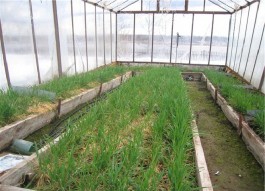 |
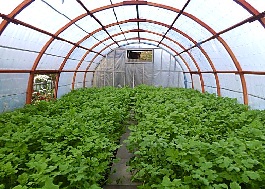 |
After removing the remnants of the crop from the greenhouse, rye is immediately sown there. Naturally, under the roof it will be able to increase its green mass longer, and in the spring it will resume growth earlier than in open beds. Naturally, it can be embedded in the soil earlier than in open ground or simply mowed so that in two weeks you can plant seedlings of tomatoes or cucumbers.
Next season, after harvesting, sow mustard in the greenhouse. It also disinfects the soil well. The third green manure can be legumes or phacelia.This is how you will get crop rotation in your greenhouse, but not the main crop, but green manure. Each green manure crop will make its contribution to improving the structure, improving the health of the soil, and enriching it with nutrients.
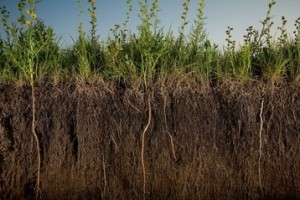
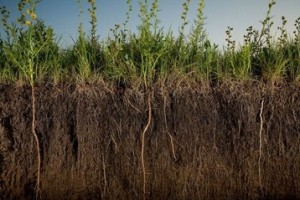
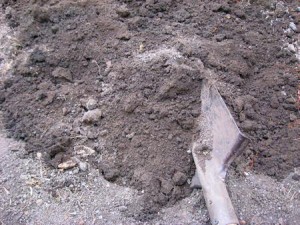
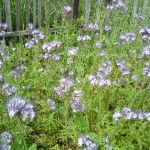
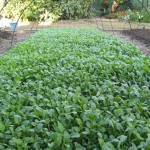
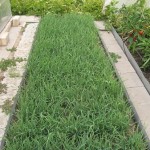
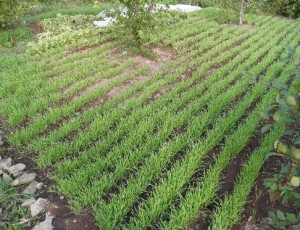
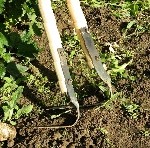
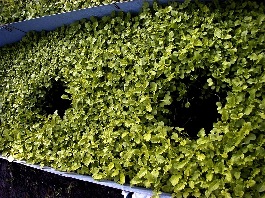
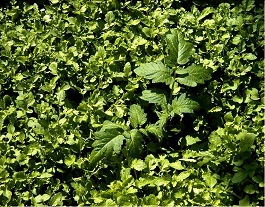
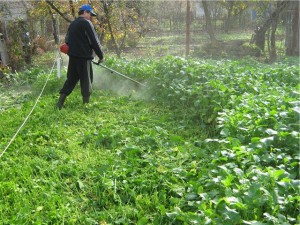
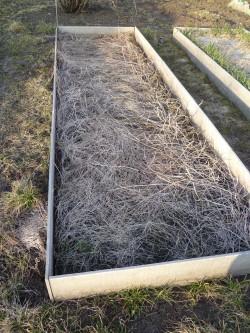

 (48 ratings, average: 4,56 out of 5)
(48 ratings, average: 4,56 out of 5) CUCUMBERS NEVER GET SICK, I'VE BEEN USING ONLY THIS FOR 40 YEARS! I SHARE A SECRET WITH YOU, CUCUMBERS ARE LIKE THE PICTURE!
CUCUMBERS NEVER GET SICK, I'VE BEEN USING ONLY THIS FOR 40 YEARS! I SHARE A SECRET WITH YOU, CUCUMBERS ARE LIKE THE PICTURE! You can dig a bucket of potatoes from each bush. Do you think these are fairy tales? Watch the video
You can dig a bucket of potatoes from each bush. Do you think these are fairy tales? Watch the video
 How our fellow gardeners work in Korea. There is a lot to learn and just fun to watch.
How our fellow gardeners work in Korea. There is a lot to learn and just fun to watch. Eye trainer. The author claims that with daily viewing, vision is restored. They don't charge money for views.
Eye trainer. The author claims that with daily viewing, vision is restored. They don't charge money for views. A 3-ingredient cake recipe in 30 minutes is better than Napoleon. Simple and very tasty.
A 3-ingredient cake recipe in 30 minutes is better than Napoleon. Simple and very tasty. Therapeutic exercises for cervical osteochondrosis. A complete set of exercises.
Therapeutic exercises for cervical osteochondrosis. A complete set of exercises. Which indoor plants match your zodiac sign?
Which indoor plants match your zodiac sign? What about them? Excursion to German dachas.
What about them? Excursion to German dachas.
The role of green manure for improving soil is enormous, although there are also opponents of using them in the country.
Thank you, I’ve been wanting to plant green manure for a long time, since the land at the dacha is poor and there’s no way to bring it in by car. Now, as soon as the snow melts, I’ll start planting.
I definitely leave green manure (mustard) in the beds; snails in the cabbage have disappeared; tomatoes are resistant to late blight. The wireworm disappeared from the potatoes. Absolutely a MIRACLE!
Wow, how interesting. I didn’t even know the word siderate. But I knew that mustard has a lot of beneficial properties for health. Now I will know about green manure. Thank you
I am glad. that the article was useful to you. Come visit us again, I hope you will find something interesting for yourself.
I'll definitely come again
I have long wanted to say goodbye to the shovel.
Your recommendations will be very helpful in this regard.
And the fact is that crop yields will become higher.
Thank you! The tips are very valuable!
Great article! The best thing I've read about green manure. I printed it out for myself so that it would be on hand at the dacha)))) I’m going to try planting seedlings in beds with phacelia in a greenhouse. I sowed phacelia late, didn’t have time to grow well, it’s a pity to plant it in the soil. And here is just a successful method described.Thank you!!
And before the phacelia in the greenhouse I just sowed mustard, and before the mustard there was rye.))) Well, just as it is written in the article, I guessed right.
Irina, I hope that you will reap a huge harvest! Good luck to you.
Very useful article. I didn’t know about all the green manures. Thank you very much for the useful information.
Very informative information, I will use it in my garden beds. Thank you.
Please tell me, if you sow green manure in a greenhouse shortly before the final harvest of tomatoes, how can you then disinfect the greenhouse in the winter?
Lyudmila, we always burn sulfur bombs in the greenhouse in the fall. All green manures die after this, but by that time they grow large enough and manage to fulfill their purpose.
Thank you.
This year I encountered spider mites in the greenhouse and was left without cucumbers, although the tomatoes grew! It’s September now and how long will it take for mustard to sprout if it is sown now and treated with sulfur in October or November? Greenhouse made of polycarbonate 3 by 4.
Margarita, mustard sprouts and grows quickly. It will have time to grow in the greenhouse; we always sow at this time.
Thank you
A plot of virgin soil, 30 acres, has died out, I would like to partially improve the loam and get rid of malicious weeds, dig rows on 30 acres and then water it while it is expensive, the house is not completed. I wonder if you throw mustard and phacelia on the ground immediately after the snow melts (when the area is still wet), will these siderites germinate without special watering? (It is written that they are cold-resistant in case of return frosts)
Alena, I have been using green manure on my site for a long time, but I have never tested them under such extreme conditions. Of course, I’m not completely sure of the success of your enterprise, but I think it’s worth a try. Mustard can withstand not only morning frosts, but also light frosts; the seeds germinate and take root even if they are not embedded in the soil (though in my case it is loose). Mustard grows quickly, the weeds cannot keep up with it. But without watering... I don’t know, I haven’t tried it, but if it rains. But there are definitely good chances.
Mustard, oddly enough, can also be capricious. Last year, immediately after the snow melted, I scattered mustard seeds throughout the garden. Considering that I don’t have permanent garden beds, and the garden is a continuous area, then it’s clear that after the snow melts, it’s simply not possible to walk around the garden. In some places the snow still remained in islands and the ground was a little frozen, and I galloped like a hare so as not to get stuck in the mud and tried to at least slightly embed the mustard seeds into the ground. Satisfied with the work done, with a sense of accomplishment, I left for the city. I returned a week later, looked at my mustard and saw that the soil on top instantly dried out and “cemented” the sprouted mustard seeds.It should be noted that our soil is loam. So it turns out to be a vicious circle: siderites are planted to improve the soil, but the soil must be improved so that these siderites at least sprout.
what kind of green manure to sow so that they grow all summer or how to sow empty land (but not with grass) so that the land can rest profitably for 1-2 years. The most important thing is that you don’t have to plow there more than you would like in the garden
Nadezhda, the simplest green manure is mustard, but it will also need to be mowed 2-3 times and watered in dry weather.
Having sowed mustard, we raised an incredible number of cruciferous flea beetles on our plot. Later I read that if radishes, cabbage and other cruciferous vegetables are grown on the plot, then sowing mustard as green manure is undesirable.
But phacelia is a wonderful plant. No fleas live on it, it now grows on its own - self-seeding, does not require special watering, is cold-resistant, drought-resistant.
Good day everyone! Please tell me where to start. When the empty land, never dug up, is covered in yellow dry grass. How to plant green manure in such soil? It is useless to level the seeds with a rake, of course.
Anna, green manures are certainly good helpers, but they are not omnipotent. In your case, you cannot do without digging up the soil.
Good afternoon, dear gardeners! Thanks for the advice! Tatyana writes that phacelia self-seeds. I read in some article that it doesn’t. Or do you not cut it?
I also dig virgin soil with a shovel (an abandoned area), then the soil dries out, I raked it and sowed it with green manure (phacelia and mustard). When it grows, I will mow it down and leave a trace. spring.
I have a couple of tricky questions:
1. When planting seedlings in a green manure carpet, the seedlings, firstly, will be partially shaded, and secondly, they will compete for nutrition with the green manure. Don't you think this is an incident? Weeds must be pulled out - this is evil, but green manure is good. Although in both cases these plants are competitors for the planted crop.
2. How does green manure enrich the soil with nutrients? If the soil is poor and there is little NPK, then where will the green manure get it from? And if everything is clear with nitrogen and sowing legumes (lupine, peas) (nodule bacteria and nitrogen fixation from the air), then with phosphorus and potassium there is a big question.
3. And one more note. When green manure rots in the soil, the bacteria feed on the same nitrogen, phosphorus and potassium that are so necessary for the plant, and when green manure is incorporated into the soil in the first weeks, the plants will compete with the bacteria for macro- and microelements.
Denis, there were not two tricky questions, but three!
1. Partial shading does not cause any harm to the seedlings; it is too insignificant. Green manure and culture compete for food for only a short time. Green manure is regularly cut and placed in the bed as mulch. Each time the layer of mulch increases and eventually the mustard stops breaking through it.Unlike weeds, the root system of green manure secretes acidic organic compounds that promote better absorption of nutrients necessary for the crop and the decomposition of organic residues, thereby improving the chemical and mechanical composition of the soil.
2. Here you are right. Green manure enriches the soil well, but mainly with organic matter.
3. There have been debates on this issue for a long time. Some argue that seedlings can be planted only two weeks after planting green manure into the soil. But according to the majority of gardeners who practice green manure, plants can be planted immediately after digging up the green mass.
Hello. Thank you for the article. The question is: a plot of 10 acres. Nothing grows from cultivated plants and we don’t plan to plant them in the coming years. There are no weeds there now! We mow regularly, but they grow within a week! If you’re honestly tired already, one day off out of two will be done with a braid. Please advise how to improve the area? Is the option in the article suitable? Or are there other options? Preferably in detail. When to start? How to start? We are not gardeners at all! Thank you in advance.
Oleg, if you don’t intend to plant anything on your plot in the coming years, then all you have to do is mow the grass or spray it with Roundup.
You can mow the grass right now, plow the area, plow it or cultivate it again in three weeks, and only then sow rye. In the spring, the area will be relatively clean, but if you don’t grow anything there, it will become overgrown again over the summer.
And this year I decided to do green manure, using potatoes.Row spacing is 70 cm, a row of potatoes with hay, and a row of green manure - mustard, peas - pellyushka, rye. The grooves were cut with a three-horned hoe. Peas in the middle furrow. Today, July 12, I looked and the potatoes and mustard are already blooming. Rye and peas were stunted in growth. We need to mow. I will lay the mown crop with mulch over the potatoes after the second hilling. The rye will still grow back, but the mustard had to be mowed until it blooms. Of the three types of green manure, probably only rye will grow to the point of snow. Next spring, in the rows with green manure, I will plant potatoes with rye greens and last year’s mulch. I'll be back next year. It's all right? In May I will report the results of the experiment.
A very interesting experience, Nikolai. Be sure to write about the results, but I'm sure they will be good.
I’ll also share our experience with green manure, sorry for the many bugs) so:
we have three vegetable gardens, 2 we swap places with each other: 1 - potatoes, 2 - everything else, 3 a small, permanent garden (not yet plowed), on which there is beautiful land, the crops on it are swapped and / or used as a “kindergarten” “, or I grow there what I can’t grow anywhere else (physalis, for example, and all sorts of spices, if they are perennial, then I transplant them to a permanent place.
last year we sowed mustard everywhere in the gardens, both in rows and between rows, but it was too late, almost nothing came up, before winter we planted only onions and garlic, in the spring we sowed mustard, ok, everything grew, BUT cut the mustard in the beds of winter onions and garlic unrealistic... I had to pull everything out, as the color began to fade, as a result, the beds were immediately overgrown with thorny weeds (I don’t even know, maybe I should have left them alone, but how would onions and garlic react to this then?), the potatoes were planted as if on mound, small mustard itself was plowed when planting potatoes, the rest of the mustard ended up in the space between the rows, everything is fine, it has grown, they have mowed it, the potatoes are blooming, there are few weeds, everything is clean, in some beds the mustard also appeared in the space between the rows - for example, peas and beans have replaced the mustard , great, we mowed the mustard between the rows, there was something left in the beds, beans and peas were climbing over it, and it was good, but they mowed it when it was already blooming, well, they didn’t have time... in the tomatoes (after they mowed the green manure mustard (all greens) I sowed cultivated (salad) mustard, spinach, arugula - there was no result in the OG this year... but oh well, we'll make do, there was enough of everything in the greenhouse)))
in previous years, we sowed phacelia, oilseed radish, buckwheat and something else in 2 changing gardens... the plot was in its 4th year, it was virgin soil, the gardens were plowed every year with the sowing of green manure (well, it’s unrealistic not to plow up just yet)... and I, of course, hoped that this year everything would be better, and we would leave ONE vegetable garden and give up plowing, but alas, I think that for another year or two we will have to change the positions of the gardens... there are a lot of mistakes, a lot of work, no strength)))
My personal conclusion:
1: all green manure, except mustard (since it grows back if mowed in time), should be planted where the soil will not be used either for the entire season or until July exactly.
2: Green manure like mustard must definitely be mowed before it starts to color if you need to use this land.
3: the potatoes don’t care, you don’t have to mow them, then mow the rows, but plant the potatoes “on a mound” and not just “in the field” (by the way, potatoes themselves are also green manure, like sunflowers, corn, and peas).
4: if there are a lot of beds, (a lot of weeding is needed), it is better to abandon half of the plantings and make 2 vegetable gardens, which can be used in turns, if, of course, the territory of the garden plot allows it, that is: divide the garden into 2 parts, one for improving the soil for the season, for the second - mustard, but mow on time, and the crops will be added to it later.
5: as soon as you remove (mow) the green manure everything becomes overgrown with weeds within a week! therefore, as I personally learned, if it’s not mustard, let it grow all season long, go into the winter without being mowed down, you can just rake them in the spring (except for Pancake Day radishes, sunflowers, marigolds, you’ll have to rip them out)…
6: we collected the crop (what we collect early, such as radishes, peas, any greens, no matter what) - if there is no need to sow or plant anything else, immediately into the empty space - green manure, or personally I sow mustard greens, spinach, We won’t eat dill, cilantro, purslane, arugula, in general, everything that goes into the salad, so at least the ground won’t be overgrown at this time...
The most difficult thing in all of this for us turned out to be TIME))) to arrive at the right time, clean, collect, sow on TIME! mow ON TIME! I didn’t have time there, I was late here, it hasn’t grown yet, it’s early, it’s already outgrown, but better late than never)))…
in general, something like this...
Alena, thank you very much for sharing your experience.
I want to divide a plot of 16 acres into 2 parts. Plant vegetables on one, green manure on the other, change next year. Question: if you plant rye or mustard in the spring and mow it all summer, then how can you plant potatoes in this place in the spring, for example. If you plow with a motorized cultivator, will it become completely clogged with roots?
Anatoly, if you plant mustard, there will be no problems. Its roots are thin and there will be practically nothing left over the winter. Planting potatoes with a shovel after rye is also quite easy, but a motor cultivator may become clogged. Nevertheless, it is preferable to plant rye under potatoes.
Tell me which green manure is best for a woman to plant. Well, to make it easier to dig up later.
Lyudmila, plant mustard. It will be the easiest to use, but only if you are not going to plant cruciferous crops after it: cabbage, radishes, etc. Everything else is possible.